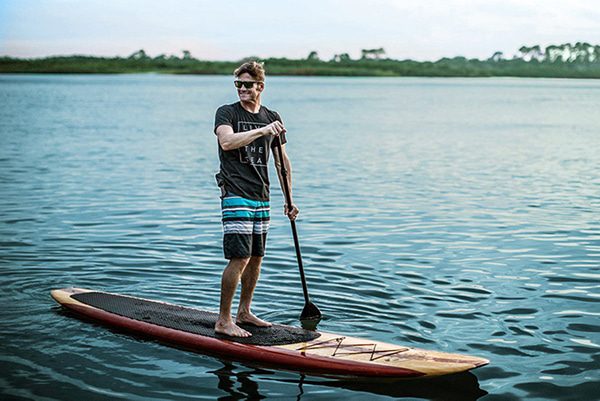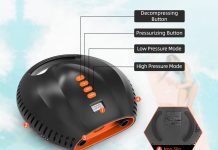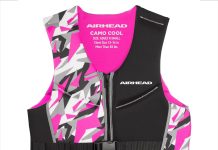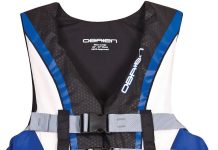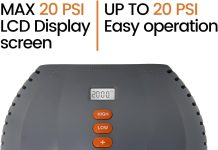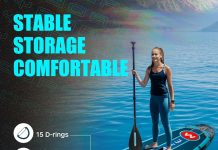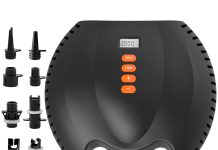Are you looking to enhance your Stand-Up Paddle Boarding (SUP) experience by increasing your paddling speed? Look no further!
In this article, we will explore various techniques and strategies that can help you boost your SUP paddling speed and get the most out of your time on the water. Whether you are a beginner or an experienced paddler, these tips will surely take your skills to the next level.
So, get ready to paddle faster, glide smoother, and embark on thrilling adventures with increased speed on your SUP!
Improving Technique
Maintain an upright posture
Maintaining an upright posture is crucial in improving your SUP paddling speed. Sitting or standing tall on your board creates less resistance and allows your body to move more efficiently through the water. Engage your core muscles to support your posture and keep your back straight. Imagine a string pulling through the top of your head, keeping your spine aligned.
Engage your core muscles.
Engaging your core muscles is essential to boost your SUP paddling speed. Your core acts as a powerhouse, transferring energy from your upper body to the paddle stroke. Focus on contracting your abdominal muscles, lower back, and obliques as you paddle. This not only increases your speed but also enhances stability on the water.
Master proper paddling technique.
Mastering proper paddling techniques significantly contributes to improving your SUP paddling speed. The correct form involves a combination of efficient paddle placement, proper grip, and a smooth stroke. Begin by ensuring that your paddle blade is fully submerged in the water before initiating the stroke. Maintain a firm but relaxed grip on the paddle, and use your arms and core to generate power. Finally, complete each stroke with a clean release, minimizing unnecessary drag.
Use your entire body.
To maximize your SUP paddling speed, utilizing your entire body is essential rather than solely relying on arm strength. Engage your legs, hips, and torso as you paddle. Initiate the stroke by planting your paddle in the water, then rotate your torso and engage your legs to transfer power through your body. You can generate greater force and acceleration by involving your entire body in each stroke, leading to increased speed.
Reach forward with each stroke.
Reaching forward with each stroke is a simple yet effective technique to improve your SUP paddling speed. Extending your reach increases the length of your stroke, allowing for more power and efficiency in each movement. As you pull the paddle through the water, stretch your arm forward and fully extend it before angling the blade to generate propulsion. This lengthened reach will optimize your paddling technique and push you towards a faster speed.
Increasing Strength and Endurance
Build upper body strength.
To increase your SUP paddling speed, building upper body strength is essential. Focus on exercises that target the muscles used in paddling, such as your shoulders, back, and arms. Incorporate exercises like push-ups, pull-ups, and dumbbell rows into your workout routine. Additionally, consider using resistance bands or try yoga poses that strengthen your upper body, like the plank and upward-facing dog.
Strengthen your core
A strong core is essential for maintaining stability and generating power while paddleboarding. Incorporate exercises that target your core muscles, such as planks, Russian twists, and bicycle crunches. As your core strengthens, you’ll notice increased speed and improved balance on your SUP board.
Work on leg strength.
While paddling primarily engages your upper body, having strong legs can enhance your overall performance and speed. Incorporate exercises like squats, lunges, and calf raises into your fitness routine. Strong leg muscles provide a solid foundation and allow more excellent force transfer as you paddle.
Develop cardiovascular endurance
Building cardiovascular endurance is crucial for sustaining a faster paddling speed over longer distances. Incorporate activities like running, cycling, or swimming into your training regimen. By improving your cardiovascular fitness, you’ll be able to maintain a faster pace and paddle with increased endurance.
Improving Equipment
Choose the right paddle.
Choosing the right paddle is essential for optimizing your paddling speed. Consider the length, weight, and material of the paddle. A too long or heavy paddle can cause unnecessary strain and slow you down. Choose a paddle with a blade shape and size that complements your paddling style and strength. Consult with an experienced paddleboarder or a professional to assist you in selecting the most suitable paddle for your needs.
Optimize your board
Optimizing your SUP board can significantly enhance your paddling speed. Ensure that your board is the appropriate size and shape for your skill level and intended use. A longer and narrower board tends to have less drag, making it more efficient for speed. Additionally, consider the stability and maneuverability of your board, as these factors can affect your overall speed and performance.
Consider a faster SUP design.
If you aim to significantly increase your SUP paddling speed, consider investing in a faster SUP design. Various types of boards are designed specifically for speed and racing, such as displacement hulls or narrower race boards. These specialized designs offer reduced drag and enhanced glide, allowing you to achieve higher speeds with less effort.
Training and Conditioning
Warm up before paddling.
Before every paddling session, it’s crucial to warm up your body to prevent injuries and prepare your muscles for the activity ahead. Start with dynamic stretching exercises to loosen up your joints and increase blood flow. Incorporate movements that target your upper body, core, and legs. Jogging or brisk walking for a few minutes can also help increase your heart rate and warm your body.
Incorporate interval training
Interval training is an effective method for increasing SUP paddling speed. Incorporate short bursts of high-intensity paddling followed by active recovery periods. This training helps improve your body’s ability to withstand and recover from intense efforts, thus enhancing overall speed.
Practice speed drills
To specifically target speed improvement, include speed drills in your training routine. Designate specific sections of your paddling route, set up markers in calm waters, and paddle intensely for short distances. Gradually increase your intensity and duration as your fitness level improves. Speed drills help build muscular and cardiovascular endurance, increasing paddling speed.
Cross-train with other activities
Incorporate cross-training activities into your routine to enhance your overall fitness and paddling performance. Cycling, swimming, or strength training can benefit different muscle groups and improve athleticism. Cross-training prevents muscle imbalances and provides a well-rounded approach to fitness, which translates to increased speed and endurance on your SUP board.
Improving Mental Focus
Visualize your desired speed.
Mental focus plays a significant role in increasing SUP paddling speed. Before each paddling session, take a moment to visualize yourself effortlessly gliding through the water at your desired speed. Imagine the fluidity of your strokes and the speed at which you’re moving. This visualization technique helps train your mind to focus on achieving your speed goals, improving your overall performance.
Maintain a consistent rhythm.
Maintaining a consistent rhythm is vital to improving your SUP paddling speed. Find a pace that feels comfortable yet challenging. Focus on timing your paddle strokes, ensuring you maintain a smooth and steady rhythm. This rhythmic cadence minimizes wasted energy and allows you to paddle efficiently, leading to increased speed.
Embrace discomfort and push through.
Achieving higher paddling speeds often requires pushing outside your comfort zone. Embrace the discomfort that comes with challenging yourself to go faster. Recognize that it is through this discomfort that progress is made. Push through any mental or physical barriers you encounter, knowing that the reward of increased speed awaits on the other side.
Stay motivated
Staying motivated is essential when working towards improving your SUP paddling speed. Set small achievable goals and celebrate each milestone along the way. Surround yourself with like-minded individuals who share your passion for paddleboarding. Consider joining a SUP training group or connecting with fellow paddlers for support and encouragement. Remember to enjoy the process and find joy in becoming a faster paddler.
Fueling and Hydration
Eat a well-balanced diet.
Fueling your body with a well-balanced diet is crucial for optimizing your SUP paddling speed. Consume various nutrient-dense foods that provide the energy and nutrients your body needs. Include lean proteins, fruits and vegetables, whole grains, and healthy fats. Prioritize foods that promote muscle recovery and reduce inflammation, such as salmon, kale, and sweet potatoes.
Stay hydrated before and during paddling.
Proper hydration is essential for maintaining optimal performance and preventing fatigue while paddling. Drink water before, during, and after your paddleboarding sessions. Aim to consume at least 8-10 glasses of water daily or more on hot days or during intense workouts. Consider carrying a hydration pack or water bottle on your SUP board for easy access to fluids.
Consider pre-workout nutrition
Before challenging paddle sessions or races, consider incorporating pre-workout nutrition strategies to fuel your body. Consume a light snack containing a combination of carbohydrates for immediate energy and a small amount of protein for sustained fuel. Options like a banana with nut butter, a small yogurt with berries, or a protein smoothie can provide the necessary nutrients to support your performance.
Replenish your body post-paddling
After intense paddling sessions, it’s crucial to replenish your body’s energy stores and aid in muscle recovery. Consume a post-paddling snack or meal that includes both carbohydrates and protein. This combination facilitates muscle repair, glycogen replenishment, and overall recovery. Opt for grilled chicken with quinoa and roasted vegetables or a turkey and avocado wrap.
Understanding Water Conditions
Study the wind and current.
Understanding the effects of wind and current on your paddleboarding speed is essential for optimizing your performance. Study the weather forecast and wind patterns before heading out to ensure you are aware of potential challenges. Paddle against the wind on your way out to conserve energy for the return trip. Similarly, be mindful of tides and currents that can affect your speed and direction, adjusting your paddling technique accordingly.
Learn to navigate choppy waters.
Choppy waters can pose a significant challenge to paddling speed. Learning to navigate through these conditions requires adapting your paddle technique. Focus on maintaining stability on your board by engaging your core and keeping your weight centered. Opt for shorter, quicker paddle strokes and slightly increase your cadence to stay balanced and maintain forward momentum.
Utilize wave energy
When paddling in areas with waves, learn to utilize wave energy to increase your speed. Timing is critical – paddle towards a wave, and as it begins to break, use the momentum to propel yourself forward. By catching the wave and timing your strokes accordingly, you can harness the wave’s energy and experience a significant speed boost.
Develop downwind paddling skills.
Downwind paddling can be exhilarating and provide an opportunity for increased speed. Practice downwind paddling skills by paddling with the wind at your back. Emphasize reaching forward with each stroke to maximize your board’s glide and catch any bumps or swells. Please take advantage of the wind’s assistance and let it propel you forward, allowing for a faster and more enjoyable paddle.
Seeking Professional Instruction
Hire a certified SUP instructor.
Consider hiring a certified SUP instructor to enhance your SUP paddling speed further. An experienced instructor can provide personalized guidance, evaluate your technique, and offer valuable insights to help improve your speed. They can also tailor training programs to suit your specific needs and goals.
Participate in clinics or workshops.
Participating in clinics or workshops led by experienced paddleboarders can be immensely beneficial in accelerating your progress. These events provide opportunities to learn from experts, receive hands-on instruction, and gain valuable tips and tricks. Clinics and workshops often cover various aspects of SUP paddling, including technique, equipment, and training.
Receive video analysis and feedback.
Video analysis can offer valuable insights into your paddling technique and help identify areas for improvement. Record your paddling sessions or have someone film you while you paddle. Review the footage and analyze your stroke, posture, and body movement. Seek feedback from professionals or experienced paddlers who can guide you in refining your technique and increasing your speed.
Join a SUP training group.
Joining a SUP training group can provide a supportive and motivating environment for improving your paddling speed. These groups often organize regular training sessions, offer group workouts, and create a sense of community among like-minded individuals. Training with others allows for friendly competition, shared knowledge, and encouragement, which can propel you towards incredible speed and performance.
Setting Goals and Tracking Progress
Set realistic and achievable goals.
Setting realistic and achievable goals is essential for improving your SUP paddling speed. Break down your ultimate speed goal into smaller milestones, such as increasing your average speed by a specific percentage within a set timeframe. Keep track of your progress and celebrate each achievement along the way. You’ll stay motivated and steadily improve your paddling performance by setting and reaching attainable goals.
Utilize GPS tracking devices.
GPS tracking devices are invaluable tools for measuring your SUP paddling speed and tracking your progress. Use a GPS-enabled smartwatch or a dedicated SUP tracking app to monitor your speed, distance traveled, and other performance metrics. These devices provide real-time data and allow you to assess your progress over time, helping you identify areas for improvement.
Track your speed and distance.
Tracking your speed and distance paddling is crucial for evaluating your progress and identifying areas for improvement. Use a speedometer or GPS tracking device to monitor your speed during paddling sessions. Set benchmarks and compare your speed and distances covered over time. This data-driven approach allows you to assess the effectiveness of your training routine and make adjustments accordingly.
Celebrate milestones
Celebrating milestones along your SUP paddling journey is essential for maintaining motivation and a sense of accomplishment. When you reach a specific speed milestone or achieve a personal best time, take a moment to celebrate your achievement. Treat yourself to something that brings you joy, such as a favorite meal or a relaxing session by the water. Celebrating milestones keeps you engaged and motivated to continue pushing your limits.
Taking Care of Yourself
Rest and recover adequately.
Rest and recovery are essential to any training routine to improve SUP paddling speed. Allow your body adequate time to recover and rebuild after intense paddling sessions. Incorporate rest days into your schedule and listen to your body’s signals. Adequate sleep, proper nutrition, and relaxation techniques such as stretching or yoga can promote recovery and help prevent burnout.
Listen to your body’s signals.
Listening to your body’s signals is crucial for avoiding overexertion and injury. Pay attention to any pain, discomfort, or fatigue during or after paddling. If something doesn’t feel right, take the time to rest and recover. Pushing through pain or ignoring warning signs can lead to more significant injuries and hinder your progress. Remember, finding a balance between pushing yourself and respecting your body’s limits is essential.
Prevent and address injuries.
To maintain an optimal paddling speed, it’s crucial to prevent and address any injuries that may occur. Warm up your muscles properly before engaging in intense training or paddle sessions, and incorporate dynamic stretches. Use proper paddling techniques and listen to your body to avoid overuse injuries. If you do experience an injury, seek appropriate medical attention and follow a structured rehabilitation program to ensure a full recovery.
Prioritize self-care
Prioritizing self-care is essential for maintaining overall well-being and performing at your best while paddleboarding. Dedicate time to activities that relax and rejuvenate you, such as meditation, relaxation exercises, or spending time in nature.
Take care of your mental health by managing stress and balancing your daily routine. By prioritizing self-care, you’ll not only enhance your paddling speed but also enjoy the process of improving your performance.

